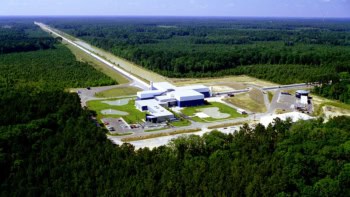
Physicists in the US have expressed dismay over the planned closure of the Holifield Radioactive Ion Beam Facility (HRIBF) at the Oak Ridge National Laboratory in Tennessee. Around 700 researchers have signed letters to William Brinkman, director of the Office of Science at the Department of Energy (DoE), warning that its closure will threaten the country’s lead in ion-beam research.
The closure of HRIBF would save the DoE’s Office of Science around $10.3m, with the money going instead towards two other projects. These are an upgrade of the Continuous Electron Beam Accelerator Facility at the Thomas Jefferson National Accelerator lab and HRIBF’s successor – the Facility for Rare Isotope Beams (FRIB) at Michigan State University. FRIB is expected to begin operations in 2019.
HRIBF is only one of four facilities in the world to produce radioactive beams using the isotope separator on-line (ISOL) technique – the others being at TRIUMF in Canada, SPIRAL at Grand Accélérateur National d’Ions Lourds in France and the On-Line Isotope Mass Separator at the CERN particle-physics lab near Geneva.
ISOL involves firing a beam of ions at a hot target, such as uranium, and then bringing the reaction products to rest. The products are separated according to mass and reaccelerated to carry out further studies. These facilities can produce unstable nuclei that are rich in neutrons and are thought to have played a vital role in the synthesis of heavy elements in stars.
Wider concerns
Nuclear physicists protesting against HRIBF’s closure have urged their colleagues to send a personalized letter to Brinkman as well as sign a letter of support for the facility. The letter has already been signed by some 700 physicists, including Nobel laureate Douglas Osheroff from Stanford University, who say they are “dismayed” to learn that the facility may close, claiming it would “represent a step backward” for US leadership in low-energy nuclear physics. “The logic behind the decision escapes us,” they write. “We are deeply concerned about the process by which this decision was made. There was no direct input form the community.”
FRIB chief scientist Bradley Sherrill from Michigan State University, who penned his own letter to Brinkman, says that losing HRIBF will hurt not only US scientists but also those around the world. “Research demand for rare isotopes is growing worldwide due to the exciting science it enables,” he says. Indeed, Sherrill adds that the decision to close HRIBF will mean that the US is less prepared for FRIB and put a strain on already highly subscribed facilities worldwide as US researchers look to Canada or Europe to do experiments.
“To allow continuation, HRIBF should not really close before FRIB opens,” says Peter Butler from Liverpool University in the UK, who is chair of the programme advisory committee at HRIBF. “We are all baffled by the logic of this decision.”
There is still a possibility that the letters will have an impact as the 2012 funding proposal is only a request from the US administration and still has to go through Congress. Indeed, Sherrill is hopeful that the final budget can still include funding for HRIBF that does not affect either the Jefferson project or on FRIB. But he admits that if Congress did accept the proposal, then HRIBF would indeed close.



